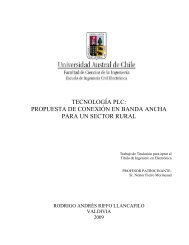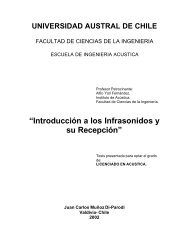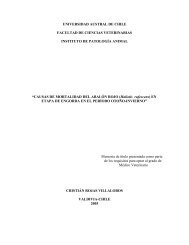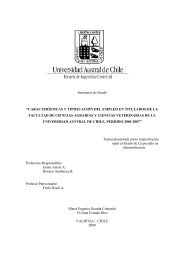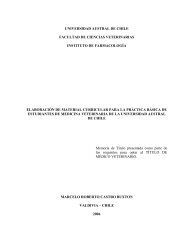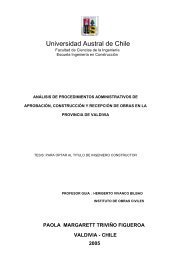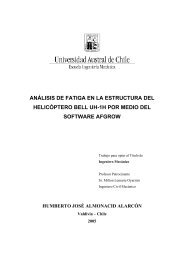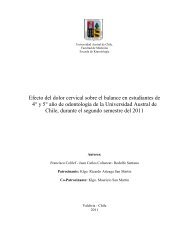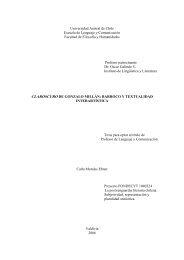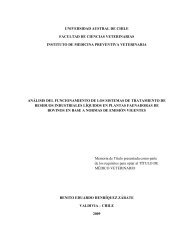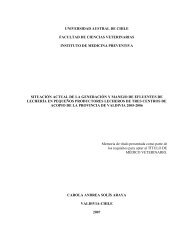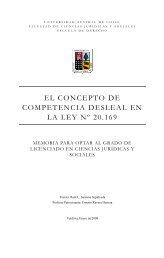Diversidad y control biológico de insectos - CyberTesis UACh ...
Diversidad y control biológico de insectos - CyberTesis UACh ...
Diversidad y control biológico de insectos - CyberTesis UACh ...
Create successful ePaper yourself
Turn your PDF publications into a flip-book with our unique Google optimized e-Paper software.
All the putative populations showed Tajima’s D values that did not significantly <strong>de</strong>parture<br />
from zero, except for Aysén (Table 4). This finding did not support the i<strong>de</strong>a that<br />
populations passed through expansion.<br />
The haplotype 1 (H1) accounted for 49 sequences (50.5%), followed by haplotypes 3 and<br />
17 with 11 and 6 sequences (11.3 and 6.1%, respectively). Eleven haplotypes were unique.<br />
The most abundant haplotype H1 was found accross the country, but other were restricted<br />
to one population. In special, H17 (n=6) and H18 (n=1) were present only at the Eastern<br />
Island population, while H8 (n=4) was unique to Los Lagos population. Sixteen haplotypes<br />
were found only in the mainland populations, although this result would be interpreted with<br />
caution because many haplotypes were unique and a sampling effect must not be dismissed.<br />
From Figure 5, some likely patterns arise. First, the haplotype 1 was present in all the<br />
sampled populations, from the Northernmost part of the country to the South, including<br />
Eastern Island, and it may be the most ancestral because of its wi<strong>de</strong> range. However, an<br />
ancestral status for haplotype 1 is not supported by its position in the haplotype network<br />
(Figure 3).<br />
Second, Eastern Island had two haplotypes not found in its mainland counterparts. Finally,<br />
two populations (Maule-Biobío and Los Lagos) seem to be more diverse than the rest of the<br />
populations.<br />
Population structure analyses.<br />
Little but significant (p



